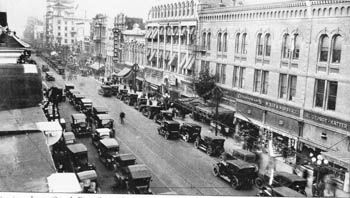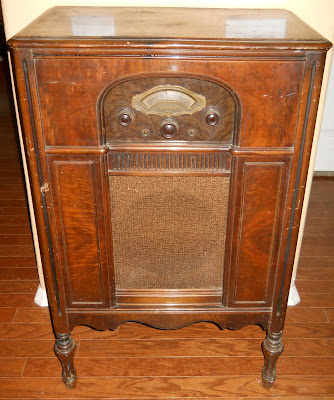SCVi's New Chromebook Cart
Our fund raising focus for the 2011-2012 school year is Technology. This focus has allowed us to purchase some really wonderful items for use in the school such as a
Mac Book Air Cart,
Digital Microscopes,
iPads, and a Google Chromebook Cart. The Google Chrome Book is a great device for student use with its small size, light weight, 8 hour battery and hard plastic case. Ours came with a
Google Branded Bretford Mobility Cart,
color laser printer, and 30 chrome books.
What is a Google Chromebook?
Simply put, a Google Chromebook is a small inexpensive laptop that runs the
Chrome OS. If most of what you do is on the web, it's a wonderful tool to get your work done. Here's a nice video from Google that explains it pretty well.
Benefits Of A Chromebook
For classes that mostly work on the web using things like
Google Docs,
WikiPedia,
YouTube,
E2020,
EdLine and others, the Chromebook does a good job of fitting their needs. The Chrome Book also has access to a wealth of applications in the
Chrome Web Store. Many of the things you'd want to do on your computer are available in the store. We have heavy use of Google Docs in grades 6 and up so the Chromebook works well for these grades.
In order to take full advantage of our Chrome Books, our school is also implementing a
Google Apps For Education Domain. This is something that should be done before you purchase and Google Chromebooks. With the Google Apps For Education domain, every Learner will be issued a Google ID. Using this google ID, the student can log into the Chrome book and it is transformed into their own device just by logging on. When they are done with the device, they simply log out and it is ready for a different student to use. All of their Google Documents and content are stored in the cloud.
I think the ability of the device to work for multiple users so nicely is the single greatest asset of the Chromebook. You can wheel a cart of the devices into a classroom, everyone logs on with their Google ID, and the device is transformed into their own personal computer. All their Google Documents and School E-Mail are available. When they log out, it's ready for the next student. It doesn't matter which Chromebook you pull from the cart, as soon as you log on, it is yours. All this power comes built into the Chromebook and there is no extra work to be done by IT staff.
Chrome Book Cautions
Though, certainly an innovative device, the Chromebook is not a full laptop where you can install anything you want. The beauty, but also the limitation is that the Chromebook only runs web applications. The Chromebook supports Flash, but not Java, so you can use your flash based web sites. Any Java based sites you use will need to be ported to HTML5. If you prefer using installed native applications like Open Office, iMovie, Outlook, or Photoshop, the Chromebook is not for you.
Another thing to pay very close attention to are the long term costs. The initial purchase price of a Chrome Book can range from $350 (
From Amazon) or $450 (From Google). The $350 Amazon device has no recurring fees, but is primarily designed for family/personal use. You can not manage it from the management console or tie it to a Google apps domain. The advantages of the $450 Google device is that it has a longer life battery, a stronger plastic shell, and can be registered specifically to your own Google domain. (Allows use of the management console). When registered with your own Google domain, the machine can be limited to only allow logins from your domain. However, there's a catch to all these benefits.
The first year of management on a Chromebook comes for free. After the first year, Google expects to charge $5 per device, per month. This is $60 per year per device (13% of acquisition cost). For a cart of 30 Chromebooks this is
$1800 per year!! Since our budgets can change from year to year we usually abstain from products that have recurring fees of any kind, especially large fees like this. I think this turns the tide somewhat against the Chrome Book and we would be unlikely to spend this much just for the ability to use the management console.
When you add up the cost of the management console over 3 years, other technologies become more competitive. Here's a quick comparison of a few that we use at our school. Note that this does not include the cost of IT staff to manage any these devices. Though, we do very minimal management on any of our devices so our cost is pretty low anyway.
| Device | Initial Cost | 30 Device Cart Cost | 3 Year Cart Cost With Recurring Fees |
| Google Chrome Book | $450 | $13,500 | $17,100 |
| Google Chrome Book (Amazon) | $350 | $12,500 | $12,500 |
| iPad | $489 | $16,500 | $16,500 |
| MacBook Air | $930 | $27,300 | $27,300 |
Summary
The Chromebook is an innovative device that fits the needs of some of our classrooms really well. Though, it's not a full laptop and does not work for everyone. It's great for folks who work entirely on the web already. The pricing for the device is competitive, but the management console quickly raises the price to where other devices become a better value. At the price Google is asking right now, I think it is very unlikely we would pay the recurring fees.
At SCVi we allow a great deal of flexibility in the technologies used in the classroom. You may see Ubuntu Linux, iPads, Mac Book Airs, Windows Netbooks, or Chromebooks. We make multiple platforms available to our teachers and students and then see what works for them. I don't expect that we'd ever commit to any one platform. Many of our facilitators come up with their own ideas and innovations. This means our IT department must be flexible, adaptable, and constantly learning.
Links And References
Here are some links that folks may find interesting.































